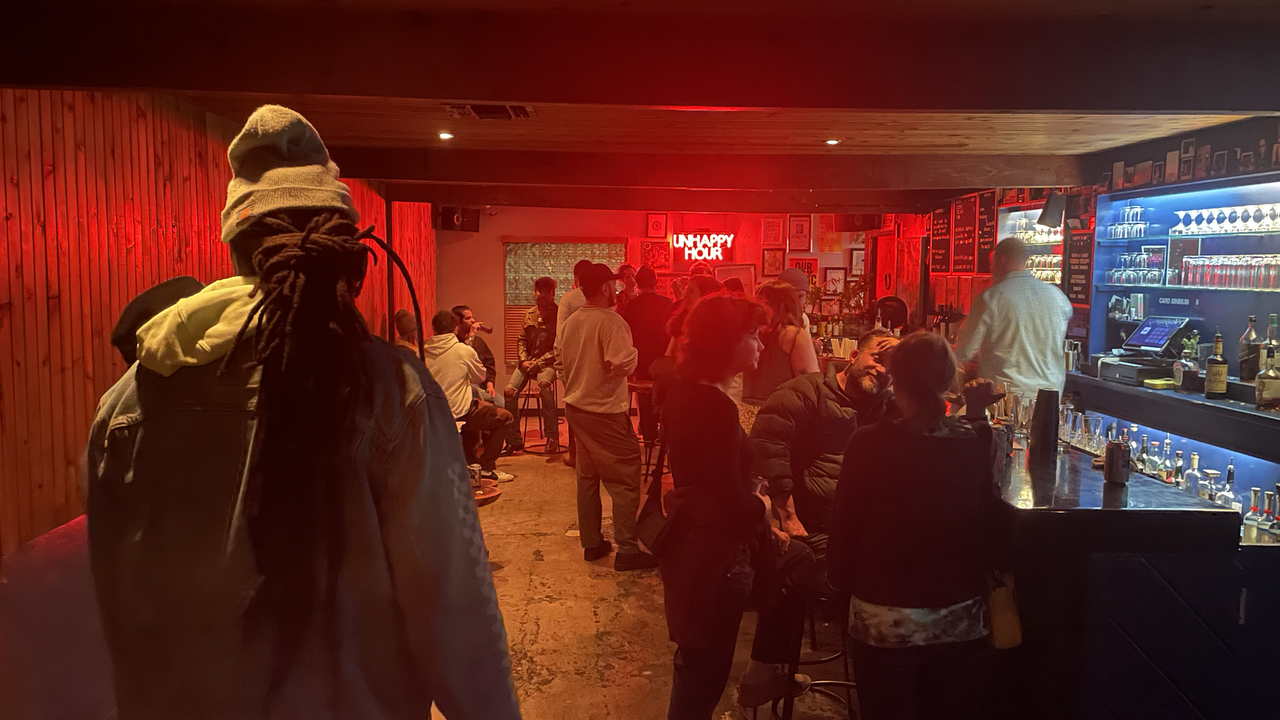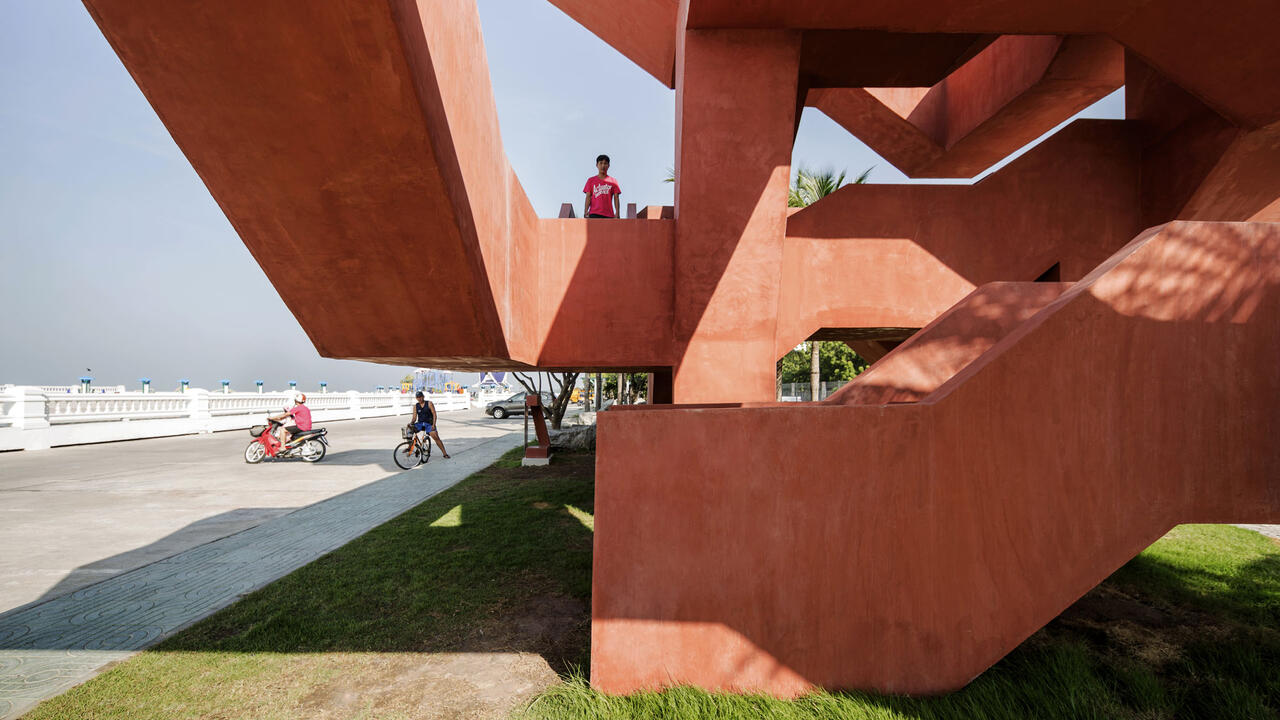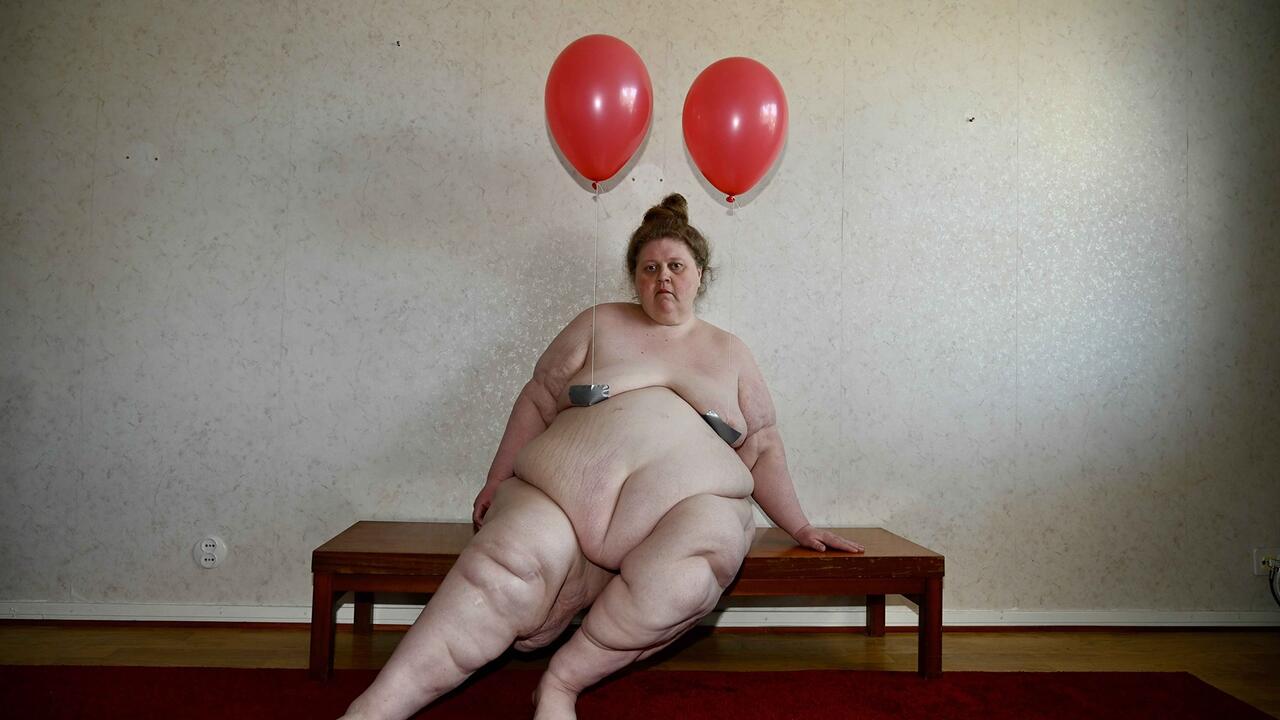Claire Fontaine

Occasionally an exhibition will crop up among the vast swaths of ambivalence-provoking fare that, through the sheer stridency of its position, cannot help but polarize its viewership. The French collective Claire Fontaine’s solo exhibition ‘Working Together’ was just such a show: swaddled in the cool-handed aesthetic of the most nominally ‘advanced’ contemporary practices (low production values, neon signage, staunchly anti-cinematic videos, appropriated bric-a-brac), it made broad assertions about the way in which politics and art can and should intersect, the manner in which the political Left should move forward, and the way in which art can be thought to have value. It was a show that truly tried – strenuously, though with an entirely weak effect – to throw down a gauntlet. And I could not disagree more with its assertions.
For the sake of brevity, I won’t touch much on Fontaine’s thinly veiled, Tiqqun-inspired insurrectionist politics, present in their numerous critical texts and alluded to in ‘Working Together’ mainly by way of a hammy (if fairly entertaining) self-defence tutorial video, and a text painting by the entrance of the gallery emblazoned with vague, portentous entreaties to organize, stake out territory and defend the common interest. I find this political tack both hopelessly antiquated and, in its often frothing, adolescent hatred of the bourgeoisie, coupled with its unthinking glorification of the ‘authenticity’ of the working classes (most blatantly on offer in the Tiqqun-associated Invisible Committee’s 2009 book The Coming Insurrection), dangerous. What, after all, are we to do with the members of the much-hated classes after the revolution, if not throw them in camps? I also consider the mealy-mouthed, jargon-besotted forms of this political position’s promulgation – utilized by the editors of Tiqqun, Fontaine and others – an impediment to reasoned debates surrounding political change, as well as a crime against language.
Insurrectionism aside, most of the work in ‘Working Together’ simply plodded along well-worn critical paths. A series of silkscreened canvases (‘The Most Subversive Thing’, all works 2011), featuring select snippets of an interview between Marc Jacobs and Richard Prince concerning their collaboration for Louis Vuitton, are bland placeholders in the debates surrounding the overlap between the worlds of art and fashion and the treatment of art as a luxury good. Bags of recyclables purchased from bottle and can collectors, which dangled from the gallery ceiling and were given requisitely absurd price tags, tell us nothing new about the combined alchemical powers of artist’s selecting hand and the numinous aura of the white cube, or the economic desperation that brought these sad, readymade mobiles into existence in the first place. Miscellaneous works related to the 2008 financial crisis – an automated shoe shiner (titled Fluffer), a series of graphs silkscreened on canvas that appear to have been lifted from a managerial manual (Identifying Success), a Newton’s cradle desk toy taken from Lehman Brothers and turned into a perpetual motion machine (Untitled [The Invisible Hand]) – felt like poorly aimed pebbles flung at a catastrophe whose enormity and socio-economic import we have yet to fully understand. Finally, The Assistants, a video of a puzzled-looking man reciting a passage from Giorgio Agamben’s eponymous 2007 essay, dragged the unholy marriage of art and critical theory to a startling new low, not by simply falling into the common trap of creating art that amounts to nothing more than an illustration of theory, but, rather, by lazily grafting theory onto the work wholesale, creating a piece that is nothing more than a glorified footnote. They are works whose winking, choir-preaching brand of pat criticality affords them no possibility of gaining traction. (Fontaine and certain of their apologists have argued that this ineffectuality is partially the point: the work is, of course, designed to highlight art’s political inefficacy. However, I would argue that defensively twisting the work into a critical ouroboros does not help its case, but merely serves to negate it entirely.)
Only one assertion made tacitly by ‘Working Together’ was truly provocative: that the primary function of art should be a politically didactic one, and that it is by dint of politics alone that art gains value. Nothing, in my view, could be farther from the truth. Not simply because I am suspicious of claims to political efficacy made from within the cloistered confines of the art world – as, arguably, Fontaine are as well – but also because in a world so thoroughly worked over by the machinations of capital and structured by the often inhuman values of the powerful, it is imperative for art to function as a bastion for the subtle, intimate and unruly aspects of the human that transcend the merely useful. If these human qualities are jettisoned, art becomes a corpse made to dance only by being jerked around on the puppet strings of ideas.















